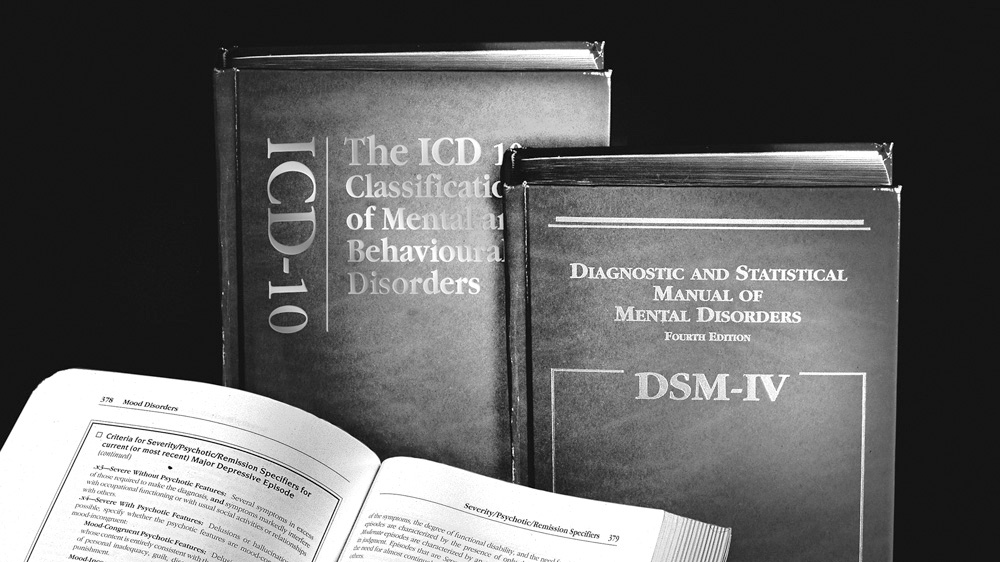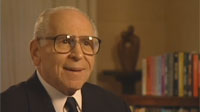The Commons – June 29, 2011
 Do you have a shopping addiction disorder? Perhaps an addiction to food? Maybe one of your kids has Internet addiction disorder, or video-game attachment syndrome.
Do you have a shopping addiction disorder? Perhaps an addiction to food? Maybe one of your kids has Internet addiction disorder, or video-game attachment syndrome.
Well, not quite yet, because these kinds of new mental diagnoses are only proposed, not final, for the new revision of the Diagnostic and Statistical Manual of Mental Disorders (DSM), the bible of the American Psychiatric Association (APA).
And there is a terrible problem with this.
The DSM was first created in the 1920s. Based on psychoanalytic theory, it enumerated fewer than 100 mental problems that a psychiatrist could diagnose, all of them attributable to environmental conditions, generally the role of parenting.
We know now that this theoretical stance was limited and, in many cases, wrong. In 1980, the second revision of the DSM took place. Freud was discarded, and the revised bible now included several hundred disorders, all delineated by a list of observable symptoms and a framework for limiting and differentiating diagnoses.
Three versions later, the current DSM lists more than 1,000 disorders. No theories are espoused for their origins, though implicit in it is that there is a mix of genetic and environmental causes that shape neurological development.
During this period of about three decades, the incidence of attention disorders in the general population has increased from 2 percent to 10 percent.
In the 1980s, people diagnosed with bipolar disorder represented less than 1 percent of the population; now the number has increased to 5 percent.
New diagnoses, like oppositional defiant disorder and conduct disorder, now cover as many as 5 percent of children.
Autism, which afflicted a tiny percentage of the population in the 1990s, now accounts for 1 out of every 100 children.
What is wrong with this picture? Do we have an epidemic on our hands? Something in the water we drink, or the air we breathe?
The standard APA explanation is that we now recognize and treat disorders that in the past were overlooked, often judged in moral terms, and left untreated.
In this view, a reasonable estimate of the current percentage of adults with undiagnosed attention deficit hyperactivity disorder would be about 1 out of 20, since we were born too early for the new diagnostic scheme. Maybe you. Certainly me.
There is another way to tell the story, however.
In this story, one could argue that each change in the DSM has essentially recruited a new batch of subjects for identification and treatment.
Instead of seeing difference as a natural outcome of personal characteristics, all of which have their place in the wonderful diversity of humankind, we have come to see individuals as made up of symptoms.
In this view, these symptoms are all treatable, usually by medication, within an implicit vision of normality arising from a dominant culture that is mainly driven by economic considerations.
And that’s the problem. The psychiatric and pharmaceutical industries essentially depend on a tautological logic, a kind of nightmarish Field of Dreams approach in which, if you define it, they will come and take their meds.
But it is not the only problem. The reality is that there are real mental disorders that carry a terrible cost, and that many of these can be treated effectively through a combination of medication, psychotherapy, and environmental support.
That our current approach mixes apples and oranges, the relatively small population that is truly in need of medical help with the much larger group that does not, risks discrediting the field in general, in ways that might ultimately mean that individuals who truly require medical intervention might choose not to get it.
It also adds costs to our yearly health-care budget which are largely unnecessary, though I have yet to hear this discussed in the Sturm und Drang that has attended President Obama’s attempt to make sense out of our broken health-care system.
Perhaps the greatest problem is that children who, in another age, were simply different — odd, quirky, restless, bored, sad, angry — are now disordered, and often drugged to make them more “normal.”
Adults, too. Between 2006 and 2010, the number of prescriptions for antidepressants increased by 43 percent. More than 23 million prescriptions were filled last year.
All of this while the world we have shaped seems to be spinning rapidly out of control, whether in the loss of contact with nature caused by urbanization and suburbanization, the terrible dislocations of a post-industrial society in which 1 percent of the population controls almost all the wealth, or in the simple reality that the climate we live in will change over the next decades in ways that will take a horrific human toll.
Who wouldn’t feel sad, or angry?
* * *
The new DSM is coming, probably in 2013 or 2014 — a lot later than its original projected deadline of 2011, in part because debates over what it should include have been so fierce.
One of the main external critiques of the process is that so many of the shrinks working on the bible are affiliated with pharmaceutical companies. It’s an important point, one that the public has barely seen in the popular press.
To my mind, the more important critique is that the fundamental underpinnings of the DSM are flawed, and that the lack of a theoretical basis means that any quirk or problem a person might express can be categorized as illness. Even expert tautological logic is still tautological.
There are reasons why people shop when they are sad, or why children stay up all night playing video games. There are reasons that a lot of preadolescent boys find it hard to sit still in class and cause problems for their teachers. There are reasons why children with overstressed parents, children who spend a lot of time living in an internal world of television, music, Facebook, instant messaging, and texting, have difficulty developing the skill of social interaction. There are reasons why children get sad, or angry, in the world they live in.
You won’t find these in the DSM.
Read the rest of the article here: http://www.commonsnews.org/site/site04/story.php?articleno=3712&page=3
For more information see this video featuring CCHR Co-founder, Dr. Thomas Szasz



SHARE YOUR STORY/COMMENT